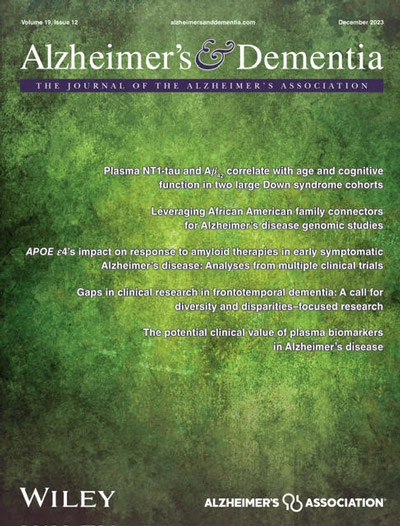Motor symptoms in autopsy-confirmed Alzheimer's disease increase the risk of progression to severe cognitive impairment
Abstract
INTRODUCTION
Motor symptoms may present throughout the Alzheimer's disease (AD) course. We evaluated the impact of motor symptoms on the risk of progression to severe cognitive impairment, severe neuropsychiatric symptoms (NPSs), and mortality in patients with autopsy-confirmed AD. We also examined the rates of non-AD pathology and identified the predictors of disease progression among these patients.
METHODS
Data from the National Alzheimer's Coordinating Center (NACC) were used for this analysis. Participants (N = 1167) were required to have autopsy-confirmed AD.
RESULTS
Motor symptoms were predictive of progression to severe cognitive impairment but not progression to severe NPSs or death. Presenting with gait disturbance and slowness but not falls or tremor was predictive of progression to severe cognitive impairment. Patients with motor symptoms had higher rates of Lewy body disease pathology on autopsy.
DISCUSSION
Our findings suggest that the presence of motor symptoms in autopsy-confirmed AD, particularly gait disturbance and slowness, are predictive of more rapid cognitive decline.
Highlights
- Clinician-defined motor symptoms in patients with Alzheimer's disease (AD) predicted more rapid progression to severe cognitive impairment but not to severe neuropsychiatric symptoms (NPSs) or death.
- Among AD patients with motor symptoms, presenting with gait disturbance and slowness was predictive of progression to severe cognitive impairment, whereas presenting with falls and tremor was not predictive of progression to severe cognitive impairment.
- Patients with motor symptoms, particularly gait disturbance and slowness, had higher rates of comorbid Lewy body disease pathology.


 求助内容:
求助内容: 应助结果提醒方式:
应助结果提醒方式:


